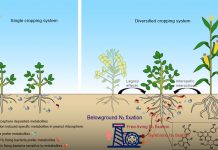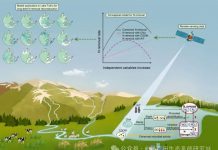Yang Ji Gang Liu Jing Ma Hua Xu Kazuyuki Yagi. Effect of controlled-release fertilizer on nitrous oxide emission from a winter wheat field. Nutrient Cycling in Agroecosystems 2012 94(1): 111-122.
Abstract
A 2-year field experiment was conducted to study effects of application rate of controlled-release fertilizer (CRF) and urea on N2O emission from a wheat cropping system. Two kinds of N fertilizers CRF and urea and four application rates (0 100 200 and 270 kg N ha−1) were used. Results indicate that the application of either urea or CRF increased total N2O emission during the wheat growing period linearly from 32 to 164 % with increasing N rate (p < 0.05) compared to the zero N control and the increase was less significant in CRF than urea treatments. Compared with urea CRF significantly reduced N2O emission by 25–56 % during the wheat growing period (p < 0.05) and the effect was more significant when N rate was higher. Grain yield increased in a power pattern from 24 to 43 % in urea treatments and from 30 to 45 % in CRF treatments with increasing N rate (p < 0.05). Specific N2O emission (N2O emission per unit of yield) increased linearly from 31 to 114 % in urea treatments (p < 0.05) and from 2 to 50 % in CRF treatments (p < 0.05) with increasing N rate. Compared with urea CRF significantly inhibited specific N2O emission (p < 0.05) and the effect increased with increasing N rate. Peaks of N2O emission did not occur immediately after fertilization but did immediately after rainfall events. CRF released fertilizer-N slowly prolonging nitrogen supply and reducing peaks of N2O fluxes stimulated by rainfall. The application rate of CRF could be reduced by 26–50 % lower than that of urea for mitigating N2O emission without sacrificing grain yield. We would not risk any significant loss of wheat yield while achieving economic and environmental benefits by reducing urea or CRF application rate from 270 kg to 200 kg N ha−1.







